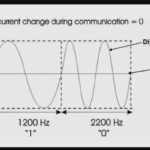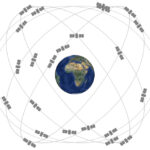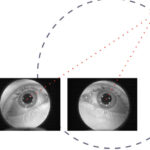 Acromag’s APCe8775 carrier card offers a simple and cost-effective solution that allows a PC to communicate with an XMC mezzanine module over a PCI Express (PCIe) bus. System developers can insert an Acromag FPGA module or other XMC module on the carrier card to perform a variety of signal processing functions. The APCe8775 3/4-length PCIe card is ideal for use in smaller embedded computers and servers with reduced-depth expansion slots. Low-profile fans provide XMC cooling from within a single expansion slot. The carrier’s PCIe x8 interface supports up to eight serial lanes for rapid data transfer between the plug-in XMC module and the host computer. These carriers are suitable for use in high-performance military and scientific research computing systems. They can also help test advanced defense and aerospace systems for later deployment on rugged computing platforms such as VME, VPX, or CompactPCI. Standard model, single-unit pricing starts at $850.
Acromag’s APCe8775 carrier card offers a simple and cost-effective solution that allows a PC to communicate with an XMC mezzanine module over a PCI Express (PCIe) bus. System developers can insert an Acromag FPGA module or other XMC module on the carrier card to perform a variety of signal processing functions. The APCe8775 3/4-length PCIe card is ideal for use in smaller embedded computers and servers with reduced-depth expansion slots. Low-profile fans provide XMC cooling from within a single expansion slot. The carrier’s PCIe x8 interface supports up to eight serial lanes for rapid data transfer between the plug-in XMC module and the host computer. These carriers are suitable for use in high-performance military and scientific research computing systems. They can also help test advanced defense and aerospace systems for later deployment on rugged computing platforms such as VME, VPX, or CompactPCI. Standard model, single-unit pricing starts at $850.
Several rear I/O connectors enable high-speed serial interfaces between neighboring carrier boards using XAUI or Aurora protocols. An MD68 port and two Samtec QPairs connectors simplify board-to-board connections with a SCSI-3 or Twinax cables to left and right adjacent carrier cards.
One XMC socket interfaces up to eight serial I/O lanes to the carrier’s PCIe x8 edge connector. The other XMC socket routes to a pair of 4-lane serial ports for board-to-board connections that support up to five high-speed (5Gb/s) transmit/receive differential or LVDS pairs. A 64-pin XMC P4 rear I/O socket routes 32 LVDS I/O to a SCSI port for additional board-to-board communication.
Two integrated fans provide a constant airflow across the XMC module since most PCs cannot provide sufficient cooling to dissipate heat generated by large FPGA devices. The narrow fans do not encroach on the adjacent slot allowing users to fill all available PCIe expansion slots.
Acromag offers many compatible XMC FPGA modules with configurable logic elements for algorithm acceleration, DSP, communication, and adaptive computing functions. Typical applications include image processing, simulation, protocol conversion, signal intelligence, and in-circuit diagnostics.
Software development tools are available for VxWorks, Linux, and Windows environments. These function libraries provide example routines or DLL driver support with C source code to save time.






Leave a Reply